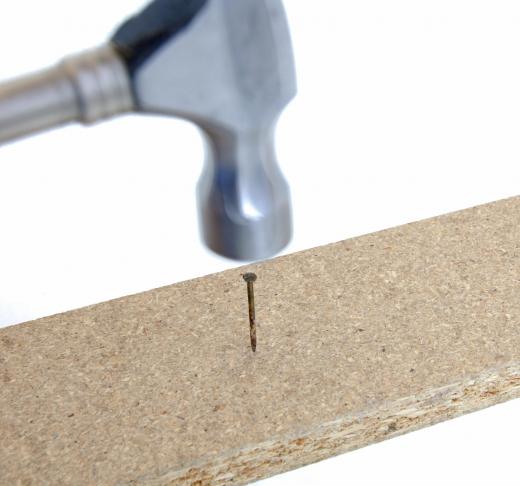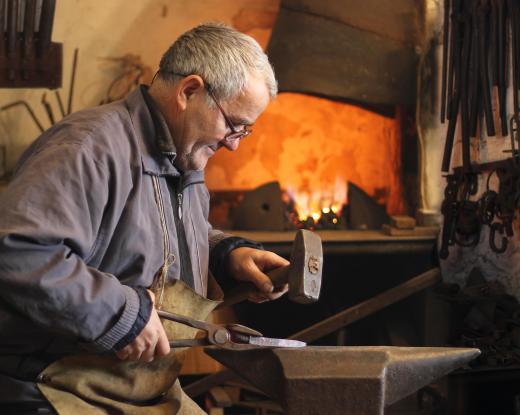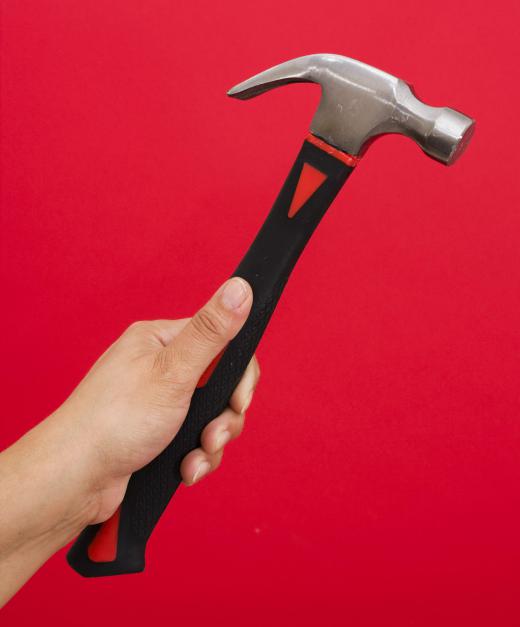A hand hammer is a hand tool used to direct force at an object. It is usually used to drive in fasteners like nails or pegs, flatten surfaces, or tighten wooden joints. A hand hammer consists of a metal head attached perpendicularly to a handle. A variety of head types allows hammers to be used for different purposes and specific tasks. The hammer head consists of a flat face on one end used for striking, and either a claw, peen, or identical end on the other side.
For many, the word hammer probably recalls a type of hand hammer known as the claw hammer. Claw hammers are named for the two-pronged claw opposite the face of the hammer head, designed for pulling nails out of wood or other materials. There are generally two types of claws, which can be curved or straight.

Curved claws are useful for easily removing nails. Straight or ripping claws are more commonly found in construction work, and while not as useful for removing nails are useful for prying apart boards or other construction work. Claw hammers come in light weights for delicate carpentry work, heavier weights for general work, with the heaviest usually used for remodeling or building.

Ball-peen hammers are a type of hand hammer usually used in metal working to fasten rivets, or other metal-working tasks. A peen is a specialized point opposite the hammer face that can be used for different tasks. The most common type is the ball peen, a spherical striking surface. For use in riveting, the hammer face is used to flatten the rivet, and the ball peen is used to shape it like a dome. Straight and cross peens, two other common types, also have metal-working uses.

There are a good deal of other surfaces that appear opposite the face on hammers. A blacksmith's hammer has a wedge-shaped end that can be used to work metal. Japanese-style hammers are a type of hand hammer which has the same face on both sides, which some prefer for its balanced feel.
Other types of hammers include lightweight hammers for work that requires using less force. The tack hammer is usually used for driving in tacks in upholstered furniture or other items. Warrington hammers have a wedge-shaped peen that can be also be used for tacks or finishing nails. Light hammers with flat faces are sometimes used to fasten glazing points, fasteners which hold glass panes in a frame. Mauls and sledges are heavy hammers used for driving posts or other hard work.
